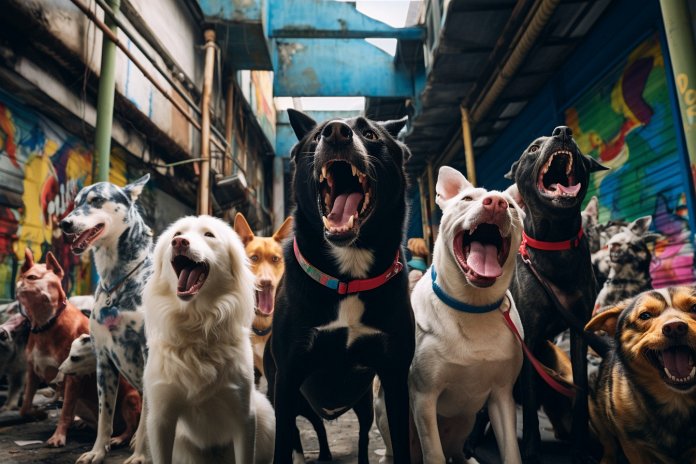
Dogs are known for their intuition and ability to comfort humans. But can they read minds? What exactly can dogs detect? Understanding what dogs can detect helps strengthen the bond between humans and dogs and can also be useful in training them.
Signs of a Dog Detecting Something
Dogs can detect many things based on facial expressions, body language, and smell. They can even sense changes in heart rate, allowing them to understand a person’s emotions and level of fear. When someone is fearful, dogs can smell the increase in sweat production. Different dogs may react differently to fear, with some becoming aggressive and others trying to provide comfort by cuddling.
Dogs can also detect sadness and will lean into their humans for hugs and cuddles to provide comfort. Some dogs are trained to detect specific things like weapons, drugs, missing people, or even blood and glucose levels in people with diabetes.
Body Language
There are several signs that indicate a dog is detecting something, such as being alert, barking, whining, scratching, sniffing, and raising their ears. Other signs include pulling on clothes, making a specific noise or reaction that they have been taught, and physically pointing.
History of Dogs Detecting Things
The relationship between humans and dogs began thousands of years ago when humans and wolves formed a partnership. Wolves helped humans hunt and provided protection, while humans fed them and offered a different kind of protection. Over time, wolves evolved into dogs, inheriting their ability to detect things through their sense of smell, facial expressions, and body language.
The Science of Dogs Detecting Things
Dogs have an incredible sense of smell, with up to 30 million olfactory receptors compared to humans’ 6 million. This sense of smell allows them to detect things from great distances and even buried underground. Dogs are also able to read human behavior and respond accordingly, just as we can understand their behavior.
Training Dogs to Detect Things
Training dogs strengthens the bond between humans and dogs and helps us understand their specific needs and quirks. Dogs can be trained at any age, but consistency and positive reinforcement are key. Training dogs not only helps them become smarter but also enhances their social skills. Praising positive behaviors through body language and a pleasant tone of voice is crucial.
Training dogs to detect specific things like tracking or sniffing out seizures or cancer requires specialized and intense training. These service dogs find satisfaction in providing care and support to humans.
“Dogs: Masters of Detection and Guardians of Our Hearts”

Tips & Things to Know
1️⃣ Dogs have a natural ability to detect things based on their instincts and senses, such as detecting fear through smell and responding with aggression or comfort. This understanding can help strengthen the bond between humans and dogs.
2️⃣ Dogs can be trained to detect specific things, such as dangerous weapons, drugs, or missing people. They can also be trained to have different responses, such as pulling on clothes or making specific sounds when they detect something. Some dogs can even detect health conditions like blood glucose levels in people with diabetes.
3️⃣ Training dogs to detect things not only strengthens the bond between dog and human but also helps dogs intellectually and socially. Consistent, firm, and loving training sessions are important, focusing on positive reinforcement and ignoring negative behaviors. Some dogs require specialized training to detect specific things like seizures or cancer.
Frequently Asked Questions, Answered ✅
1. Can dogs read minds?
– Dogs cannot read minds, but they have a keen sense of smell and are able to detect various things based on facial expressions, body language, and smell.
2. What can dogs detect?
– Dogs can detect a range of things, including emotions such as fear and sadness, changes in heart rate, specific scents like drugs or dangerous weapons, and even blood and glucose levels in people with diabetes.
3. How do dogs detect things?
– Dogs primarily use their sense of smell to detect things. They also rely on their ability to read facial expressions and body language to understand human emotions and reactions.
4. What are some signs that a dog is detecting something?
– Signs that a dog is detecting something include being alert, barking, whining, scratching, sniffing, and raising their ears. They may also pull on your clothes, make a specific noise or reaction that you have taught them, or physically point towards something.
5. How can dogs be trained to detect things?
– Dogs can be trained to detect things through consistent, firm, and loving training sessions. Training should start at a younger age, but older dogs can still learn. Positive reinforcement, such as praise and rewards, is key in training dogs to detect specific scents or behaviors. Specialized training is required for service dogs that can detect seizures or cancer.